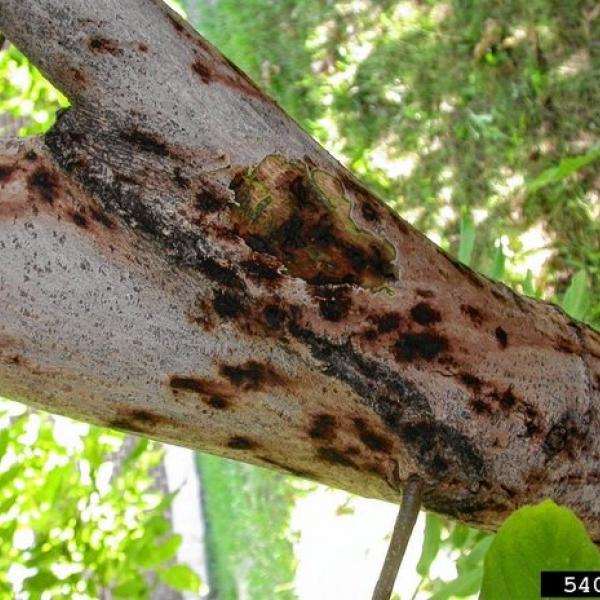
News Source
Syracuse, N.Y. -- A tree disease capable of wiping out black walnuts across the Eastern U.S. is heading for New York.
Thousand cankers disease has arrived in Ohio and Pennsylvania. It has not yet been found in New York state, but it could be on its way, or even here already.
"It could come into New York at any time," said Karen Snover-Clift, director of the plant disease diagnostic clinic at Cornell University. "If it can survive in Pennsylvania, I'm sure it can survive in areas of New York."
Snover-Clift said it can take 10 years for the fungus to build up in a tree enough to damage and then kill the tree, so it's even possible that it's in New York already but not detected.
State Department of Environmental Conservation spokeswoman Lori Severino said in an email that neither the fungus nor the beetle has been found in New York. Severino said the state annually sets out traps for the beetles, and that DEC field employees are trained to look for signs of the disease.
"We are very concerned about the arrival and rapid detection of this potentially serious pest of our walnut and butternut trees," she said.
Thousand cankers disease is a fungus spread by the tiny walnut twig beetle, which is only one-sixteenth of an inch long. The fungus carried by the beetle kills walnut and butternut trees by causing small holes, or cankers, in the growing tissue of the trees between the bark and wood.
While other states have greater stands of black walnut, a prized species for its nuts and dark heartwood, New York could still be hit hard by the disease, Snover-Clift said.
"We do have a significant amount, and it would be a big issue for producers of black walnut lumber and even black walnut syrup," said Snover-Clift, who gives presentations about the disease across the Northeast.
The walnut twig beetle was not found in any of 30 traps set in New York in 2014, the last year data is available from thousandcankers.com, a clearinghouse run by forest industry trade groups and the USDA.
The disease is native to the Western United States, and is found in at least nine Western states from California to Colorado. It was first found in the East in 2011, in Tennessee, and and was in at least seven Eastern states as of a year ago, according to thousandcankers.com.
Tennessee researchers said the disease could be devastating to black walnut trees, which have a native range from Texas to Vermont.
"The impact of (thousand cankers) on black walnut in its native range is unclear; however, scientists speculate that, if left unmanaged, this disease could cause the extinction of this important native timber/nut/nursery crop/mast producer in eastern U.S," according to a 2011 study published in the journal Forest.
The value of black walnut trees could be $500 billion, according to the New York state Invasive Species project.
In Pennsylvania, the disease has been found in six adjacent counties in the southeast corner of the state, said Logan D. Hall, speaking for the Pennsylvania Department of Agriculture. No new infestations were found last year, Hall said, and the department is just starting its 2016 survey.
Some experts compare thousand cankers to other tree diseases that have wiped out or severely reduced some tree species in the U.S., such as American chestnut blight, Dutch elm disease and the emerald ash borer, which kills ash trees.
Symptoms of the disease include a thinning canopy, leaf yellowing or wilt, and dying off of the tip of the tree. These symptoms appear too late to save the tree from the disease, however, and too late to prevent infection from nearby trees.
There is no cure for the disease. At least 12 states have issued quarantines to prevent moving infected wood, similar to what New York has done with ash trees in areas hit by the emerald ash borer.
For more information on how to detect thousand cankers disease, try these sites:
Thousand cankers disease fact sheet, Ohio State University